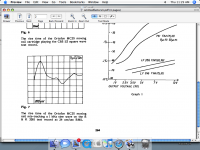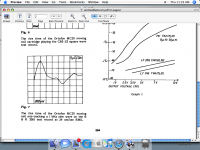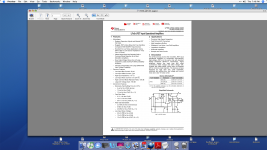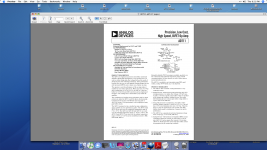I wonder if he considered his many years in College a waste of his time?
In our case achievement of a childhood goal was enough, as they say dwelling on the past breeds depression dwelling on the future breeds anxiety.
Wayne Newton counseled students years ago to skip college entirely so consider the source on advice, there are limited places to sing "Edelweiss" for $100,000 a week.
I guess that crystal chandelier went too... Wayne Newton's 65-foot yacht shown SINKING in new video | Daily Mail Online
The rumor at the time was that Wayne had no clue as to what those hoses were for.
Last edited:
I decided to drag myself away to avoid that. Looking back not entirely sure it was the right move, but hey ho.
"Here, we report the first quantum teleportation of independent single-photon qubits from a ground observatory to a low Earth orbit satellite—through an up-link channel— with a distance up to 1400 km."
https://arxiv.org/ftp/arxiv/papers/1707/1707.00934.pdf
George
If somebody would like to tell me, it would probably be better for me to know than not know.
Mark if I could make a comment, you come back around often to music production things like Marshal amps, effects plug-ins, etc. This is a phono pre-amp thread, I would assume a two channel signal (voltage vs time) that you want to amplify and condition with as little deviation from ideal as possible. All "effects" are off the table.
I have seen a commercial phono stage that I consider an effects box, 3 to 5dB deviation from RIAA that is level dependent and plenty of resultant distortion. If someone prefers this what am I to say but anything goes.
To piggyback on a Ph.D trajectory that was a short part of the conversation: Another tenure-track scientist bites the dust | Science | AAAS
still soul crushing levels of competition for funds. While I just did get a Ph.D and am now a postdoc, it is very hard for me to recommend this track for anyone who cannot be convinced it's a terrible idea (and I'm ultimately leaning towards industry, but landed on an amazing opportunity that I couldn't refuse).
Back when the energy department was called the AEC (Atomic Energy Commission), I was offered all expenses paid .. full salary while attending further college ed. A one person a year selection and was all but guaranteed to get it if I would only apply. The department heads asked me time and again and the next year.... Nope. and am I sorry? No. It would have put me further into the crushing competitive pressure of R&D and publish or parish competitive world. But, I did OK in spite of not getting an advanced degree or PhD. For me, it just isn't all its cracked up to be. So many things to explore, adventures and variety of things to spend ones time doing and learning. So, I became a jack of all trades and master of none. .
-RNM
Funding is particularly bad in UK at the moment due to the erm, issues we are having with the big divorce(tm). But at least Daresbury and it's sister, the wonderfully named 'diamond light source' are relatively well supported.
Interestingly , whilst researching around some questions raised by a 55 year old SEM picture of a vinyl groove (not least how did they get hold of one to use for the pictures) I was looking at the history of SEM development in the late 50s and early 60s in the UK, and the big push came in Cambridge as the then head of department thought giving Engineering Phd students something that was considered impossible was a good grounding. One of the fresh faced grads given a task around this was a certain Alec Broers. I met him some years back and he is one of the more amazing people I have met. The SEM work got him interested in nanotechnology in general , so with his freshly minted piledhigh and deep he headed to IBM for 20 years, ending up as an IBM fellow (one of only 40 at any time apparantly). Back then this was an exceedingly cushy job for a researcher as you could do what you wanted without question. Once his sailing yacht was paid off he returned to academia, became head of the engineering department, then head of the university. Got a knighthood (arise Sir Alec) then on retiring got made a Baron, silly outfit and all. Few plum directorships to top up the pension as well. No wonder he is always smiling!
I suspect there are very few academics who manage to get the cutting edge research and the big money though. Most are not wired that way. And not sure anyone funds research quite the way IBM did in the 60s and 70s.
But still no idea how Decca got access to an SEM in 1959
Interestingly , whilst researching around some questions raised by a 55 year old SEM picture of a vinyl groove (not least how did they get hold of one to use for the pictures) I was looking at the history of SEM development in the late 50s and early 60s in the UK, and the big push came in Cambridge as the then head of department thought giving Engineering Phd students something that was considered impossible was a good grounding. One of the fresh faced grads given a task around this was a certain Alec Broers. I met him some years back and he is one of the more amazing people I have met. The SEM work got him interested in nanotechnology in general , so with his freshly minted piledhigh and deep he headed to IBM for 20 years, ending up as an IBM fellow (one of only 40 at any time apparantly). Back then this was an exceedingly cushy job for a researcher as you could do what you wanted without question. Once his sailing yacht was paid off he returned to academia, became head of the engineering department, then head of the university. Got a knighthood (arise Sir Alec) then on retiring got made a Baron, silly outfit and all. Few plum directorships to top up the pension as well. No wonder he is always smiling!
I suspect there are very few academics who manage to get the cutting edge research and the big money though. Most are not wired that way. And not sure anyone funds research quite the way IBM did in the 60s and 70s.
But still no idea how Decca got access to an SEM in 1959
Still more off topic: This is a very clear of the miss-tracking of an Ortofon MC cartridge that I found to be close to worst case.
A uA741 used for a low output MC was that SOTA at the time? Pretty low arts I have to say.
Scott, wake up! My miss-tracking measurement was made in 1978, though a modified Levinson JC-2 phono preamp, with only 30 dB of gain at 1KHz, and no 75uS rolloff.
The measurement of the 741 was done in 1976 at Matti Otala's lab in Finland by me as well. This distortion was generated from a TIM test signal.
In other words, Fig. 7, was captured years later and designed to be as accurate as possible, and comes from a test record.
Graph 1 was made by measuring the actual distortion generated by the uA741 configured as a phono preamp. They are different measurements, each appropriate at the time to show (1) what we have to pass undistorted worst case, and (2) what a uA741 does with a similar test signal, and an even slower one. Please note the difference.
The measurement of the 741 was done in 1976 at Matti Otala's lab in Finland by me as well. This distortion was generated from a TIM test signal.
In other words, Fig. 7, was captured years later and designed to be as accurate as possible, and comes from a test record.
Graph 1 was made by measuring the actual distortion generated by the uA741 configured as a phono preamp. They are different measurements, each appropriate at the time to show (1) what we have to pass undistorted worst case, and (2) what a uA741 does with a similar test signal, and an even slower one. Please note the difference.
Attachments
Last edited:
For those interested: Look at Graph 1 more carefully. You will find that there are 2 different IC op amps measured with the same circuit. Of course there is the uA741, but also there is the LF356, an early fet input IC that was available at the time. Please note the difference in TIM!
Also there are two similar test signals used, BUT one is slower. This TIM(30,30) signal is faster, but the TIM (15,10) is within the boundaries of the rise-time of a good MM phono cartridge while it is mis-tracking.
Also there are two similar test signals used, BUT one is slower. This TIM(30,30) signal is faster, but the TIM (15,10) is within the boundaries of the rise-time of a good MM phono cartridge while it is mis-tracking.
Attachments
Last edited:
Scott, You posted your cheapy Grado tracking STR-112 square wave quite nicely a while back. http://www.diyaudio.com/forums/analogue-source/303389-mechanical-resonance-mms-4.html#post5009323
But I don't get the mistracking on the b&K record John is showing. The highest level on QR2010 is +8dB which doesn't seem 'that' high. 24cm/s modulation has been shown in the literature to occur in real recordings, albeit to try and sell certain manufacturers products. Was that not ortofons greatest tracker?
edit; MC20 mk1 was only rated 60um at 315Hz, so no not a superlative tracker, but probably good for 1978. Their modern MCs are 90um or more.
But I don't get the mistracking on the b&K record John is showing. The highest level on QR2010 is +8dB which doesn't seem 'that' high. 24cm/s modulation has been shown in the literature to occur in real recordings, albeit to try and sell certain manufacturers products. Was that not ortofons greatest tracker?
edit; MC20 mk1 was only rated 60um at 315Hz, so no not a superlative tracker, but probably good for 1978. Their modern MCs are 90um or more.
Last edited:
But I don't get the mistracking on the b&K record John is showing.
Well you got me. Everything you know is wrong especially from you know who. It's been the shell game the folded bills for decades, as they say never smarten up a chump.
Last edited:
Now, let's look further at Graph 1, made 41 years ago at a lab in Finland. I did not built the set-up. Matti Otala's people did. I only used the phono stage that they built to measure different op amps with the test signal that we were developing at the time.
Of course the uA741 did fairly lousy. Duh! But it is not just lousy, it is VERY LOUSY. Then, on the same Graph 1, I showed what I measured with the LF356, one of the first jfet input op amps available at the time.
Guess what? It measures much better, and I suspect that IF I had the AD711 available to me at the time, it might actually measure slightly better. How much better? Not much better. This is reality folks. These are lab measurements made with HP test equipment. What it really shows is that a typical jfet input ic would just get by, but would still have easily measured TIM distortion. Nothing has changed that much in the last 40 years.
Note: Please compare the title sheet of the LF356 with the AD711, how much difference would you expect?
Of course the uA741 did fairly lousy. Duh! But it is not just lousy, it is VERY LOUSY. Then, on the same Graph 1, I showed what I measured with the LF356, one of the first jfet input op amps available at the time.
Guess what? It measures much better, and I suspect that IF I had the AD711 available to me at the time, it might actually measure slightly better. How much better? Not much better. This is reality folks. These are lab measurements made with HP test equipment. What it really shows is that a typical jfet input ic would just get by, but would still have easily measured TIM distortion. Nothing has changed that much in the last 40 years.
Note: Please compare the title sheet of the LF356 with the AD711, how much difference would you expect?
Attachments
But, I did OK in spite of not getting an advanced degree or PhD.
Obviously so, I haven't seen so far any PhD showing off a Bentley and having as a supreme argument (in an otherwise technical debate) his financial potence.
Scott, I can remember us being friends. Do you really believe that I am an incompetent liar?
God forbid, you are a competent and conscious one.
So sad
Here is the other op amp: compare the two
I did: it's apples and pears. An old junction isolated process vs. laser trimmed.
- Status
- Not open for further replies.
- Home
- Member Areas
- The Lounge
- John Curl's Blowtorch preamplifier part II



